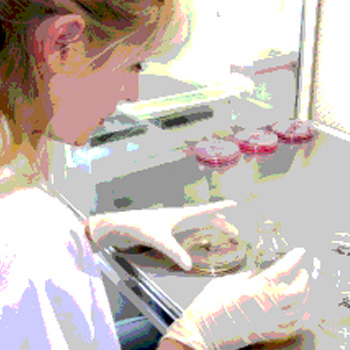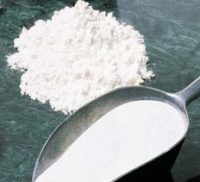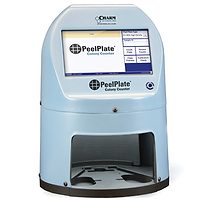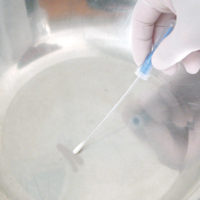In the past 40 years, there have been approximately 60 reported cases of severe infections worldwide associated with Enterobacter sakazakii, a heat-resistant, Gram-negative rod shaped bacterium that, while rare, has been shown to cause severe disease and death in infants less than two months old, in premature babies, and in infants with immune systems weakened by illness. Within just the past decade, there has been an increasing number of cases reported around the world and although the reservoir is unknown, powdered milk-based infant formulas are recognized by the scientific community as a primary vehicle of the microorganism.
To illustrate the severity of the problem, the following are a few of the more well-known cases and outbreaks reported globally:
• United States. In April 2001, a prematurely delivered male infant in respiratory distress was admitted to a neonatal intensive care unit. The child exhibited extreme symptoms including neurologic abnormalities, and after clinical cultures were postive for E. sakazakii, the infant was treated with intravenous antimicrobials. Ultimately, the child died, diagnosed with meningitis. Subsequent analysis showed that powdered infant formula was the only risk factor. Additionally, testing of both opened and unopened cans of the formula produced positive growth of E. sakazakii.
In 1988, an outbreak of E. sakazakii infection was reported involving four infants in a neonatal ward in Memphis, TN. Three suffered from bloody diarrhea and three had sepsis. All four survived. The outbreak was traced to contaminated powdered infant formula.
Belgium. In 1998, 12 premature babies suffered from necrotizing enterocolitis, 10 of whom were fed the same powdered infant formula product. E sakazakii was isolated from six of those cases, both from the formula fed to the infants as well as in unopened tins of the formula. Two of the infants died.
New Zealand. Four identified cases of E. sakazakii infection in premature babies—one in 1986, two in 1991, and one in 2004—have been linked to the consumption of infant formula.
The Netherlands. Eight cases of neonatal meningitis caused by E. sakazakii over a period of six years were reported in the Netherlands between 1977 and 1983. Two of the cases had both necrotizing enterocolitis and meningitis. Despite antibiotic treatment, the fatality rate was 75%.
With mortality rates from 33-80%, as well as the onset of life-threatening diseases such as meningitis, septicemia, brain abscesses and necrotising enterocolitis—which may be survived but cause other serious, chronic or neurological disorders long after recovery—international concern has sparked several actions in the standard-setting, regulatory and scientific communities. Individual governments have addressed the concern in a number of ways, with a flurry of regulatory edicts and manufacturing and testing guidelines in the past few years. The U.S. Food and Drug Administration (FDA) sent a letter to healthcare professionals to warn them of the risks associated with the use of powdered infant formula contaminated by E. sakazakii and requesting that they report adverse events to MedWatch. In the same year, Belgium’s national Food Safety Council issued a similar warning, recommending that all kitchens in hospitals and maternity wards should comply with food safety regulations and went so far as to advise against the use of ready-to-feed formulas.
Also in 2002, Germany’s Federal Institute for Consumer Health Protection issued a position paper on infections caused by E. sakazakii, warning that powdered infant formulas are not sterile and strict food safety procedures should be followed in preparation of feeds, and product should be monitored for bacterial contamination. Most recently, in July 2005, the New Zealand government authority made E. sakazakii invasive disease notifiable to the national Medical Officer of Health in that country. Notification, stated the order, enables both identification of instances of invasive disease and consideration of the need for public health action. This includes consideration of risk factors including use of powdered infant formula and the time between making up the formula feed and infant feeding, and microbiological assessments.
The Food and Agriculture Organization (FAO)/World Health Organization (WHO) has led the global charge for several years, convening workshops in 2004 and 2005 to address requests by nations including the U.S. and Canada for expert consultations on E. sakazakii and the risk associated with the Enterobacter genus in powdered infant formula. In January 2005, WHO finalized a draft resolution on E. sakazakii, calling on the Codex Alimentarius to establish standards and guidelines on foods for infants and young children and to urgently complete work currently underway on addressing the risk of microbiological contamination of powdered infant formula. In February 2005, the Codex Executive Committee concurred, urging the Codex Committee on Food Hygiene to finalize the revision of the Code of Practice for Foods for Infants and Children, including appropriate microbiological criteria for E. sakazakii and other relevant microorganisms, as a matter of high priority.
So, what has all this to do with testing? A mere two years ago, the food industry did not have a method to test for E. sakazakii. Today, we have three different government-issued and recommended conventional microbiology methods, as well as some commercially available rapid tests that address some of the former’s shortcomings in speed to result. The development of sensitive, accurate rapid and automated methods to screen, isolate and enumerate this emerging microorganism of concern is particularly useful to the manufacturers of powdered infant formula and milk powder since E. sakazakii exhibits a competitive advantage in dry environments due to its high tolerance to desiccation and the product is not considered sterile since there is no post-pasteurization step at packaging. As the international scientific community moves quickly on this issue as a priority, so too must the continued focus on developing the best test methods available for these product manufacturers.
Basic Challenges
Although contaminated powdered infant formula, particularly reconstituted product, is implicated in the vast majority of serious infections in neonates, the fact remains that the reservoir of E. sakazakii, which belongs to the Enterobacteriaceae family, is unknown. Research studies have shown E. sakazakii present throughout the environment—from food plants, to hospitals, to consumers’ homes—showing positives in food and environmental samples ranging from ultra-heat-treated milk, spoiled tofu, lettuce, sausage, cheese and vegetables, to inside beer mug and in kitchen blenders (where powdered infant formula was reconstituted). One of the more interesting studies, conducted by researchers at Wageningen University in the Netherlands and reported in the medical journal Lancet, proved the ubiquitous nature of the bacterium. In trying to learn where E. sakazakii enters formula on its way from a production line to a baby’s bottle, the researchers conducted a study in nine European food plants and 16 households. After analyzing floor and vacuum cleaner sweepings from these sites, the researchers found the microoganism in all four powdered milk plants, as well as plants manufacturing chocolate, cereal, potato flour and pasta (from 9% to 44% of samples) and in five of the 16 homes studied.
As this latter study indicated, it is difficult to determine how E. sakazakii gets into infant formula, much less as to whether the microorganism will grow to unacceptable levels in terms of health risk. As mentioned, E. sakazakii has been isolated at very low concentrations in these products, and even at these low levels, exposed at-risk infants have suffered serious injury and death. E. sakazakii grows very rapidly in reconstituted infant formula kept at room temperature. It is particularly well adapted to growth at temperatures around 37C–44C. Although powdered infant formula is typically heat-treated during processing it cannot undergo pasteurization in the final packaging, which means the product is not sterile. E. sakazakii is not a particularly thermally resistant microorganism, but it does show substantial diversity in thermal resistance among strains.
In general, there is good agreement among studies showing that inactivation of the bacterium is possible at temperatures above 70C, even if thermally treated for just a few seconds. In a research report by FDA’s Sharon G. Edelson-Mammel and Robert L. Buchanan published in the March 2004 Journal of Food Protection, the ability of 12 strains of E. sakazakii to survive heating in rehydrated infant formula was determined at 58C with a submerged coil apparatus. The observed D58-values ranged from 30.5 to 591.9 seconds, with the strains appearing to fall into two distinct heat resistance phenotypes. The z-value of the most heat-resistant strain was 5.6C. When dried infant formula containing this strain was rehydrated with water pre-equilibrated to various temperatures, a more than 4-log reduction in E. sakazakii levels was gained by preparing the formula with water at 70C or greater.
However, specific information on its resistance to other treatments is generally lacking. Current information indicates that E. sakazakii shows moderate acid resistance and alkali resistance (if adapted); low to moderate chlorine resistance; low to moderate irradiation resistance; and moderate to good resistance to drying. It will remain viable in refrigerated and frozen products for extended periods, particularly those with neutral pH.
While powdered infant formula manufacturers are committed to producing product under Good Manufacturing Practices (GMPs) and Hazard Analysis and Critical Control Points (HACCP) programs, using process control measures to monitor raw materials and ingredients (especially those added after the final heat processing treatment), and implementing effective sanitation measures, the need for a testing program to confirm that these controls have been effective is critical. The program should include testing for general hygiene indicators like Enterobacteriaceae, specifically E. sakazakii.
Isolation and Enumeration
E. sakazakii isolation from clinical samples utilizes standard methods for the isolation of Enterobacteriaceae. The microorganism grows on blood agar, MacConkey, eosin methylene blue, deoxycholate agar and tergitol 7 agars. Characterization in clinical labs is commonly done by using methods such as the API-20 (BioMerieux), the Phoenix Automated Microbiology System or BBL Crystal Enteric/Nonfermenter Identification System (BD Diagnostics) or the Enterotube II System (Roche Diagnostics). However, no special media have been developed for E. sakazakii.
In the food industry, there are three conventional microbiological methods currently recommended to isolate and enumerate E. sakazakii from powdered infant formula: the European Method, Canadian Method and FDA Method.
European Method. This most probable number (MPN) method requires triplicate 100 g, 10 g and 1 g samples mixed with 9x volumes, respectively, of buffered peptone water at 45C until completely dissolved. Following overnight incubation at 36C, the samples are inoculated 10 mL from each flask into 90 mL of Enterobacteriaceae enrichment (EE) broth. Following a second overnight incubation at 36C, the samples are in duplicate, inoculated at 1 mL from each enrichment broth into 20 mL of fluid Violet-Red-Bile Glucose (VRBG) agar, and incubated for a third overnight period at 36C. The European Method utilizes a representative API strip (BioMerieux) for E. sakazakii for confirmation.
A European survey analyzed 141 powdered infant formula samples from 35 countries. E. sakazakii was isolated from 20 samples collected from 13 of the countries. The levels of E. sakazakii recovered ranged from 0.36 to 66 colony forming units (CFU)/100 g. The lowest level of detection reported in this method was 0.36 CFU/100 g.
Canadian Method. This method is a minor modification of the European Method. Dried infant formula is suspended in sterile water and suspect colonies from VRBG plates are subcultured to TSB-YE agar. The method utilizes API-20E confirmation, with no additional biochemicals. Levels are determined by MPN, and the method reports a 0.36/100 g sensitivity.
In a Canadian survey, E. sakazakii was isolated from eight of 120 cans of powdered infant fomula, representing five manufacturers, at a level of 0.36 CFU/100 g.
FDA Method. In 2002, FDA introduced an E. sakazakii isolation and enumeration method, which made minor modifications to the Canadian Method. this method involves direct spreading or streaking of the overnight EE broth to isolate Enterobacteriaceae, rather than using VRBG pour plates. Five presumptive colonies subcultured to Trypticase Soy Agar (TSA) are incubated at 25C for 48-72 hours. Only yellow-pigmented colonies, typical of E. sakazakii, from the TSA plates are confirmed using the API 20E system. No additional biochemical testing is recommended. The level of detection by MPN is 0.36/100g, resulting in a method that can detect levels of E. sakazakii much lower than the recommended FAO level of 3.0 CFU/g of powdered infant formula.
In a recent FDA field survey, regulators collected an official sample of selected powdered infant formulas and raw materials in order to assess the prevalence and numbers of E. sakazakii in these samples. The agency’s objective was to conduct an inspection at each major domestic powdered infant formula producer in order to understand any possible relationship between industry practices and the prevalence of E. sakazakii. Results of this survey showed that all positive finished product samples were at the lowest limit of quantitation (0.36 MPN/100 g); that there was no correlation between test results and manufacturing practices (e.g., wet mixing/spray drying vs. dry blending); and that there was no apparent relationship between test results and product type (i.e., soy vs. milk).
Rapid Methods Round-Up
Currently, there are very few rapid microbiological methods available for the isolation and enumeration of E. sakazakii from powdered infant formula. However few, these rapid tests are extremely useful to infant formula manufacturers for a number of reasons. Clearly, speed to result is one of the most critical when one considers the high vulnerability of the most likely consumers—premature and immuno-stressed infants who often are not able to feed from the breast.
Chromogenic Media. There are two chromogenic media available commercially that promise increased specificity and sensitivity over the FDA recommended VRBG agar. Because the FDA method is not selective of E. sakazakii it is possible to get a false-negative result if, due to the combination of EE broth and VRBGA, other Enterobacteria outgrow the E. sakazakii and will likely not allow clear differentiation of the target organism from these similar bacteria.
One of these, Oxoid Chromogenic Enterobacter sakazakii Agar (Remel, Lenexa, KS)—also known as the Druggan-Forsythe-Iversen (DFI) formulation—allows recovery and detection of E. sakazakii in three days, an improvement over the typical five-day conventional test results. Intended for the differentiation and enumeration of E. sakazakii from infant formula and other food samples, the method requires pre-enrichment and selective enrichment, followed by plating samples onto the DFI formulation. The chromogenic medium contains the substrate 5-bromo-4-chloro-3-indolyl-a,D-glucopyranoside, which is cleaved by the enzyme a-glucosidase, expressed by E. sakazakii, to form easily distinguishable blue-green colonies. The inclusion of desoxycholate inhibits the growth of most Gram-positive organisms.
According to the manufacturer, the Oxoid Chromogenic Enterobacter sakazakii Agar has been shown to increase the recovery of E. sakazakii from powdered infant formula and other food samples when it is used to replace the two plating media in the FDA method. Using an inoculating loop, the technician removes 10µl from the incubated EE broth and streaks it onto the surface of a Chromogenic Enterobacter sakazakii Agar plate. The plate is incubated at 35-37C for 24 hours and observed for blue-green colonies. Confirmation of presumptive blue-green colonies as E. sakazakii is done biochemically, using systems such as Biolog GN2, Microbial ID systems (Oxoid).
R&F Enterobacter sakazakii Chromogenic Plating Medium (R&F Laboratories/Biosynth) is another chromogenic plating method available for identifying E. sakazakii. Presumptively positive colonies of E. sakazakii appear as blue-black raised to domed colonies 1.0 to 2.0 mm in diameter with or without halos after 24 hours at 35C. The manufacturer also offers an E. sakazakii Screening Medium, which promises positive growth on sugars after 6 hours at 35C. Again, this chromogenic plating medium isolates E. sakazakii and inhibits or differentiates similar bacteria.
Polymerase Chain Reaction (PCR). As reported by Seol and Brackett in the January 2005 Journal of Food Protection (Vol 68, No. 1), an assay was developed for the specific detection of E. sakazakii in infant formula using an application of the fluorogenic 5’ nuclease assay (TaqMan). The specificity of the assay was evaluated using 68 Enterobacter and 55 non-Enterobacter strains. The assay detects 100 CFU/mL in pure culture and in reconstituted infant formula in 50 cycles of PCR without enrichment, and is specific enough to discriminate E. sakazakii from all other Enterobacter and non- Enterobacter strains tested. The authors noted that real-time PCR assay could save up to five days and eliminate the need for plating samples on selective or diagnostic agars and for biochemical confirmation steps. The real-time PCR assay could be used to rapidly screen infant formula samples for E. sakazakii and would be a boon to food industries and regulatory agencies, they concluded.
In collaboration with Nestlé Research Centers in Switzerland and the U.S., DuPont Qualicon developed and introduced in 2003 a PCR-based assay for rapid detection of E. sakazakii in infant formula, dry dairy and soy ingredients samples. Qualicon’s studies have shown that the E. sakazakii PCR assay added to its BAX system line of diagnostic tests provides reliable next-day results with 98% accuracy on samples with low levels of contamination such as powdered infant formula.
Qualicon’s RiboPrinter Microbial Characterization System, an automated DNA fingerprinting instrument, also has been used in infant formula manufacturing plants to assist investigators in tracking the source and pathways of a number of strains of E. sakazakii contamination in actual plant settings. The ability to specifically identify the source of contamination enables the plant to institute immediate corrective actions in problem areas, including making improvements to sanitation or process control systems.
More Tests to Come
While outstanding progress has been made in just two short years in developing alternative isolation and characterization test methods for E. sakazakii that are more rapid than existing conventional methods, continued development and improvement of rapid methods for detection and characterization of this emerging microorganism is needed. There is room for innovation on proven techniques such as impedance, for example, in which the medium is available and might allow for the creation of a one- or two-step, 18- to-24 hour preenrichment assay. And perhaps even the development of screening test kits for home use would be useful to consumers as an added food safety confirmation. Ultimately, the most vulnerable of society are at risk for serious, adverse health effects and even death, and although the incidence of E. sakazakii infection is rare, the quest to improve and make available every testing tool available to infant formula manufacturers should be of the highest priority.
Purnendu C. Vasavada, Ph.D., is professor of food science at University of Wisconsin-River Falls. As an extension specialist in the area of food safety and microbiology, he has worked with rapid methods and been an instructor in programs the world over. Vasavada directs the three-day course, “Current Concepts in Foodborne Microorganism and Rapid Methods and Automation in Food Microbiology,” designed to provide food processors with up-to-date information on rapid methods, testing protocols and technologies most suitable for their operations. The 25th Anniversary workshop and symposium will be held Oct. 15-19, 2005, in River Falls, WI.
Acknowledgment
This article is based, in part on presentations by Jeff Kornacki, Richard Forsythe, Jeff Farber and Oxoid, given at the Contaminants and Natural Toxi-cants Subcommittee of the Food Advisory Committee meeting, March 18, 2003.
The author also wishes to acknowledge the contribution of the University of Wisconsin-River Falls Food Safety and Microbiology program and the University of Wisconsin Extension Service.
Enterobacter sakazakii: The Quest for Tests




